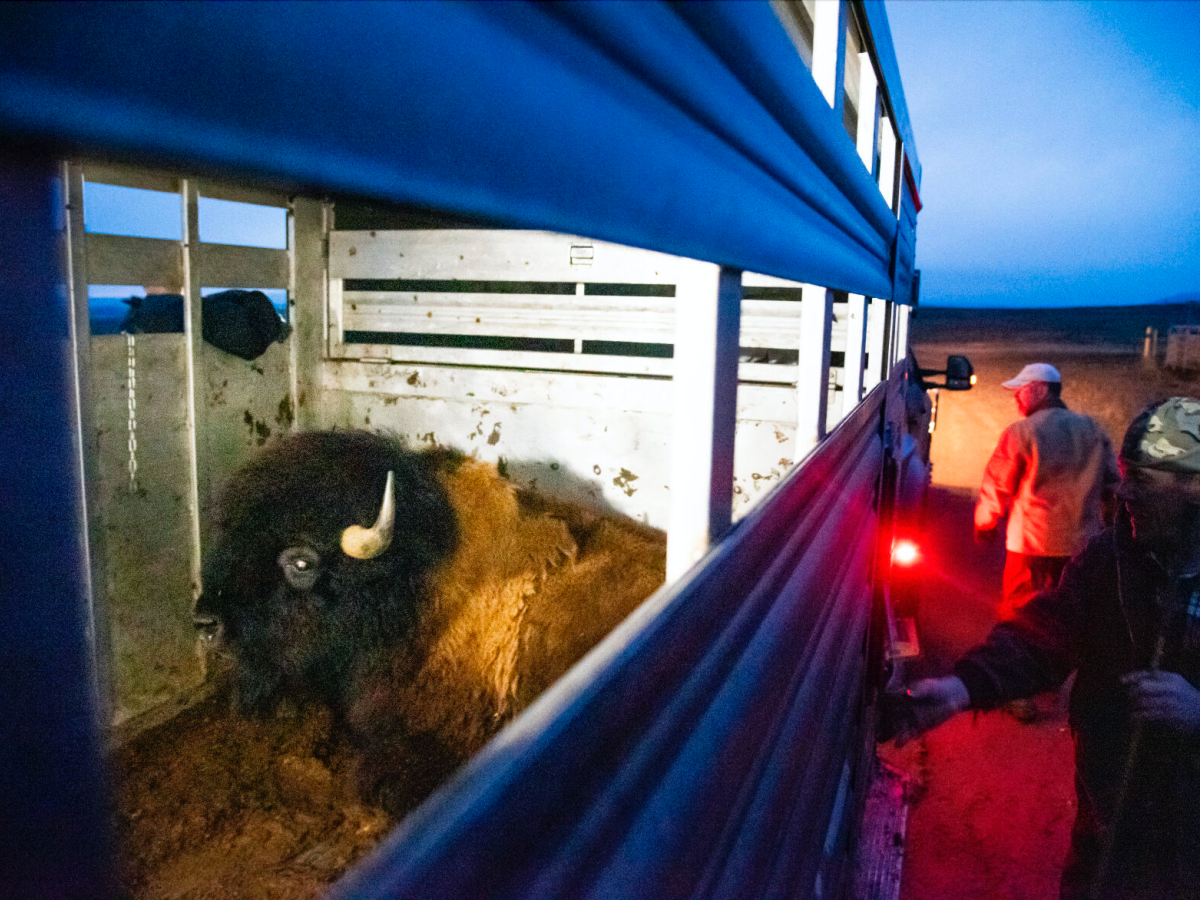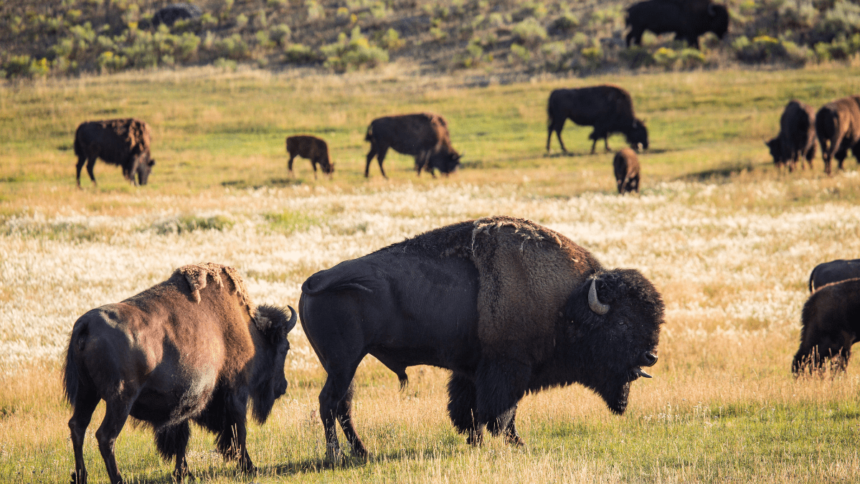This story is adapted from the MT Lowdown, a weekly newsletter digest containing original reporting and analysis published every Friday.
Yellowstone National Park is proposing a major shift in its strategy for managing bison, one that could mean larger herds, expanded hunting opportunities beyond park borders, and more bison transfers to tribal governments.
The park prepared its new bison management plan in response to research regarding brucellosis, a bacterial disease that can cause cattle to abort their young. That research has concluded brucellosis transmission to livestock — a concern that has underpinned the park’s bison-management approach for more than two decades — is more likely attributable to elk than bison.
The park, along with other federal, state and tribal agencies, has historically limited bison expansion outside park boundaries. For years, the animals have been subject to a capture-and-quarantine strategy, hazed back inside the park, shipped to slaughterhouses or shot by hunters, mostly tribal members.
Groups like the Montana Stockgrowers Association have long pushed to limit bison presence outside the park, arguing that risks associated with brucellosis transmission, fence damage and forage loss should preclude the park and other decision-makers from taking a more hands-off approach to bison management.
The park’s new plan, technically an environmental impact statement, preserves its ability to “take more aggressive management actions” in coordination with other federal, state and tribal partners working under the existing Interagency Bison Management Plan if the risk of bison mingling with livestock increases. The plan allows for some hazing and “ship-to-slaughter” operations as needed — bison management techniques that have drawn intense criticism from wildlife advocates.
RELATED
Yellowstone presents alternative bison strategies in draft plan
Yellowstone National Park is soliciting feedback on a proposal outlining strategies for managing bison, a long-awaited document that will guide how the park manages the animals in coordination with state and tribal wildlife officials. The plan has implications for population objectives and where bison will be tolerated outside of park boundaries.

Bison transfers to tribes grow as state pushes to shrink Yellowstone herd
Since 2019, the Yellowstone Bison Conservation Transfer Program has transferred 414 bison to Fort Peck. A record 116 animals were transferred this February: 108 males, four females and four calves.

Rewilding the national mammal
There’s a bottleneck of bison at brucellosis quarantine facilities outside of Yellowstone National Park. Two bills introduced by a Montana lawmaker could alleviate that, helping tribes across the U.S. restore viable wild herds. Will the Montana Legislature back them?
The park’s plan will manage the herd for 3,500-6,000 animals, a modest expansion from the status quo alternative based on the 24-year-old existing plan. The park says the new plan will “facilitate bison recovery; improve hunting opportunities outside the park; enhance local, regional, and tribal economies; and enrich the experiences of tribal members, residents, and visitors.” A third alternative the park analyzed but didn’t select would take a more laissez-faire approach to bison management, treating them more like elk and allowing natural selection and bison dispersal to play a larger role in herd distribution and size.
Michelle Uberuaga, Senior Yellowstone Program Manager with the National Parks Conservation Association, described the plan as an “important next step” that is science-based and will allow bison to thrive in Yellowstone.
“We applaud the Park’s commitment to expanding Tribal cultural herds and will continue to work to ensure bison are managed in the same manner as other wildlife in the Greater Yellowstone Ecosystem — including ending the annual ‘ship to slaughter’ program,” Uberuaga said in the emailed statement.
The plan’s release comes after years of tension between the federal government and Gov. Greg Gianforte’s administration over bison management. The U.S. Interior Department in March of last year pledged to invest $25 million in bison restoration efforts, citing their ecological, historical and tribal importance. In 2022, Gianforte joined the Montana Stockgrowers Association and Montana Attorney General Austin Knudsen in opposing an effort to expand bison grazing on Bureau of Land Management-administered land in north-central Montana, and the prior year the state agreed not to explore bison introduction on state-managed land for at least a decade as part of a lawsuit settlement.
A spokesperson for Gianforte criticized the EIS, calling it “yet another insult to the state of Montana.”
“It is not based in science, fails to incorporate any comments from our agency professionals, and reflects a total disregard for the rule-making process,” Gianforte Press Secretary Katilin Price wrote in an email to MTFP. “In the coming weeks, the governor will be submitting a formal response.”
The park administration is expected to formally adopt the new plan by issuing a record of decision at the conclusion of a 30-day wait period.
LATEST STORIES
MTFP to present inaugural Free Press Fest
Montana Free Press has announced the inaugural Free Press Fest, a two-day event taking place September 5-7, 2024, at the University of Montana. The festival aims to promote civic engagement, celebrate the state’s rich culture, and advance conversations around issues that matter to Montanans.
The primary tug of war between hardline and moderate GOP legislative candidates
As is long tradition in Montana politics, the 2024 primary election saw a sweat-drenched tug of war play out in Republican legislative primaries between the hardline and comparatively moderate wings of the state’s currently dominant political party.
An incredible life, an amazing woman
Nearly 50 years after Xong Xiong left her home country of Laos amid the turmoil following the Vietnam War, the Missoula resident will celebrate her 100th birthday surrounded by family and friends.





